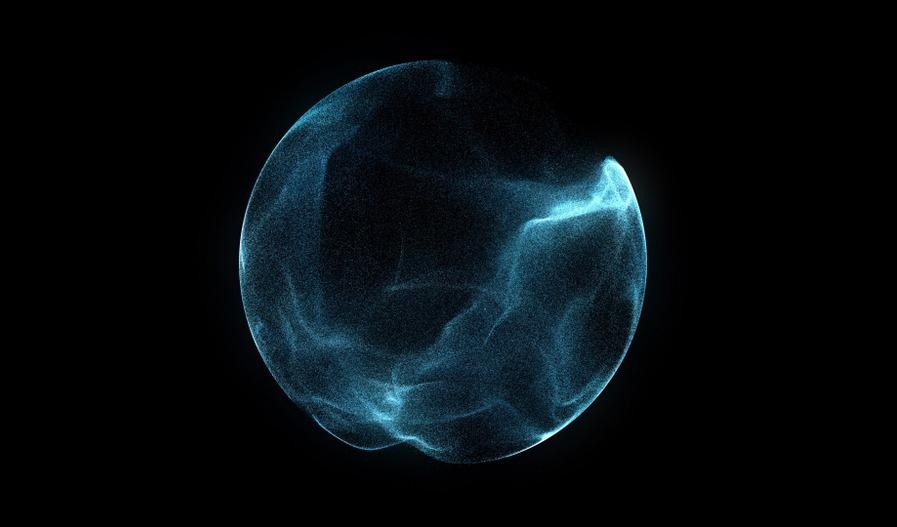Researchers were able to make a theoretical quantum effect in condensed matter which means a particle always comes back to its starting point.

Image Credit: Quardia/Shutterstock.com
Physicists have observed a strange phenomenon predicted several years ago that results in a particle launched from a disordered system that should land in a random place, but instead always returns to its starting point.
This so-called “quantum boomerang” was experimentally observed by researchers from UC Santa Barbara for the first time, and could prove to be a useful probe of the quantum nature of matter.
The effect seen by the team, including atomic physicists David Weld and Roshan Sajjad of UC Santa Barbara’s Physics Department, is fundamental to the concept of quantum mechanics with no analogy in classical physics.
The team’s research is documented in a paper published in the journal Physical Review X.
The boomerang effect is associated with a phenomenon first predicted by physicist Philip Anderson six decades or so ago. This disorder-induced behavior called Anderson localization is a general wave phenomenon applying to the transport of electromagnetic waves, acoustic waves, and spin waves. One of its consequences is the inhibition of the transport of electrons.
The disorder that leads to the onset of this behavior can be the result of imperfections in a material’s atomic lattice, including but not limited to impurities, defects, misalignments, or other disturbances.
These imperfections prevent electrons from dispersing to any location or from traveling along the lattice, instead causing them to localize. The net result of this is the transformation of a conducting material into an insulator.
The difficulty in observing the quantum boomerang effect that arises from this is that it's practically impossible to launch disordered electrons away from a localized starting position and follow them while observing their behavior.
However, the team, working out of David Weld’s lab, came up with an interesting solution to this problem.
A Cool Quantum Physics System
The team at Weld Lab used gas of around 100,000 lithium atoms at ultracold temperatures and held in a standing wave of light. They created the lattice and simulated the disorder within it by quantum “kicking” the atoms periodically.
This allowed them to observe the toss of the quantum boomerang and its subsequent return to its starting position. The team working in so-called “momentum space” — a way of defining a system with every possible momentum, rather than every possible position.
This allows them to side-step experimental difficulties but still preserve the underlying physics of the quantum boomerang. This is because in conventional “physical space” the experimenters say they would have to give the electron velocity then look to see if it came back to the same spot.
On the other hand, working in momentum space means the team can start with a system that has an average momentum of zero. They can then look for a departure from this zero average, followed by a return to it.
Spotting Fundamentally Different Behaviour
Applying their quantum kicks to the atomic gas, the team saw an initial change in average momentum and watched as, despite repeated kicks, the momentum consistently returned to zero.
This constitutes what the team calls “fundamentally different behavior” from a classical system that would react by constantly absorbing the energy supplied by the kicks. Instead, the quantum system starts gaining energy initially but eventually stops, achieving what is called a dynamically localized state.
This phenomenon is the result of a fundamental aspect of quantum mechanics, particle-wave duality, which means that quantum systems can possess aspects of particle-like behavior, and wave-like behavior.
That means that the physicists in Weld Lab weren’t just pushing particles, they were also pushing waves. This wave-like behavior means quantum systems demonstrate interference, and this interference can serve to cause the system to return to its initial conditions.
The researchers found that while periodic kicks caused the time-reversal effects of a quantum boomerang, this behavior was destroyed if the kicks were delivered at random times.
Next up for the team will be an attempt to generate several interacting quantum boomerangs in an attempt to see if these interactions destroy this behavior. They will also look for many-body effects and will attempt to see how quantum boomerangs function in higher dimensions.
References and Further Reading
Sajjad. R., Tanlimco. J. L., Mas. H., Weld, D.M., et al, [2022], “Observation of the Quantum Boomerang Effect,” Physical Review X, [https://journals.aps.org/prx/abstract/10.1103/PhysRevX.12.011035]
“Position Space and Momentum Space,” University of California, San Diego, [https://quantummechanics.ucsd.edu/ph130a/130_notes/node82.html]
Disclaimer: The views expressed here are those of the author expressed in their private capacity and do not necessarily represent the views of AZoM.com Limited T/A AZoNetwork the owner and operator of this website. This disclaimer forms part of the Terms and conditions of use of this website.